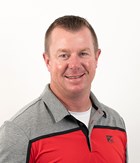Maintaining Phosphorous and Potassium Levels
BY Dairyland Seed Agronomy Team
Overview
Harvest removes valuable nutrients from the soil. Understanding the amount of nutrients removed is crucial to understanding how to fertilize for the highest yield potential next season. With high input costs, it can be tempting to skimp on nutrients to save cost. Over time, however, this approach can reduce yield potential and profitability.
What you should know
- Fifteen mineral elements are considered essential to plant growth. Nitrogen (N), phosphorus (P) and potassium (K) are usually the most limiting.
- Due to high fertilizer prices, it is tempting to cut rates of P and K to compensate for the necessary costs of N.
- Table 1 shows the amounts of P and K removed by various crops. Pay special attention to the high amounts of K removed by silage and dry hay crops. A fertilizer program that does not supply these minimum amounts “mines” the soil of required nutrients.
- Soils that are high or optimal in P and K may not see yield drops immediately, but production will fall eventually. Remember that crops can only yield as much as the most limiting nutrient will allow.
- Low P and K contribute directly to lower grain fill and poor disease resistance and standability.
Action steps
- Develop a soil testing program: Soil testing is critical to determining fertilizer requirements. Most soil testing labs will adjust fertilizer recommendations automatically based on test results.
- Account for nutrients supplied: Sample manure periodically to determine the exact nutrient supply applied to the field. Remember that manure application calibrated to P in high-P soils will frequently require supplemental N fertilization. Fertilizing to N requirements with manure will almost always oversupply P and K. Depending on where you farm, this can be an environmental concern in high-P soils.

30-Second Summary
- Compensating for nutrients lost through harvest is critical to maximizing return on fertilizer investments.
- Cutting P and K to save cost may not result in immediate yield drops, but losses will occur eventually.
- Nutrients are essential to good corn and soybean crops, and applying the correct amounts will always help improve profitability
Whether your customers are using anhydrous ammonia or liquid manure this fall, Andrew Luzum, Nutrient Maximizer strategic account manager for Corteva Agriscience, has tips for application prep. Click here to learn more.

Brian Weller
Western Region
507.456.3034

Rod Moran
Western Region
507.456.3034

Dan Ritter
Central Region
219.863.0583

Chad Staudinger
Northern Region
608.220.9249

Mark Gibson
Eastern Region
260.330.8968

Amanda Goffnett
Eastern Region
989.400.3793

Ryan Mueller
Eastern Region
989.400.3793
